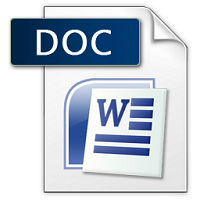₹198.00
Scroll down for Match your questions with Sample
Note- Students need to make Changes before uploading for Avoid similarity issue in turnitin.
Another Option
UNIQUE ASSIGNMENT
0-20% Similarity in turnitin
Price is 700 per assignment
Unique assignment buy via WhatsApp 8755555879
Description
SESSION FEB’24 PROGRAM BACHELOR OF BUSINESS ADMINISTRATION (BBA)
SEMESTER I
COURSE CODE & NAME DBB 1105 – COMPUTER FUNDAMENTALS
CREDITS 4
Assignment Set – 1st
Questions
- Discuss the characteristics of computers. Discuss the various computer generations along with key characteristics of the computers of each generation
Ans:Computers possess several key characteristics that define their capabilities and functionality.
Here are some of the most notable characteristics:
Speed:
Computers can process data and execute instructions at incredibly high speeds. Modern computers can perform billions of calculations per second (measured in gigahertz), allowing them to complete complex tasks quickly and efficiently.
Accuracy:
Computers are highly accurate in executing instructions and processing data. They can perform repetitive tasks with precision, minimizing errors and inconsistencies in calculations and operations.
Its Half solved only
Buy Complete from our online store
https://smuassignment.in/online-store/
MUJ Fully solved assignment available for session FEB 2024.
Lowest price guarantee with quality.
Charges INR 198 only per assignment. For more information you can get via mail or Whats app also
Mail id is aapkieducation@gmail.com
Our website www.smuassignment.in
After mail, we will reply you instant or maximum
1 hour.
Otherwise you can also contact on our
whatsapp no 8791490301.
- Differentiate between positional and non-positional number system. Convert the number (3456 )10 to the binary system.
Ans:Positional and non-positional number systems are two different approaches used to represent numbers.
Here’s how they differ:
Positional Number System:
In a positional number system, the value of a digit depends on its position or place value within the number.
The most common example of a positional number system is the decimal system (base-10), where each digit’s value is determined by its position relative to the decimal point.
For example, in the number 3456, the digit ‘3’ represents 3000 (3 * 10^3), ‘4’ represents 400 (4 * 10^2), ‘5’ represents 50 (
- Difference between RAM and ROM. What is Operating system? Briefly explain functions of operating system.
Ans:
Difference between RAM and ROM
RAM
- Instructions are temporarily in nature
- Instructions can be read and write form the memory
- Instructions can be updated (add, modify, delete) by user.
- Volatile memory
ROM
Assignment Set – 2nd
Questions
- What is data communication? Explain basic elements of communication system. What is OSI reference model?
Ans:Data Communication
Data communication is the transfer of data or information between a source and a receiver, the source transmits the data and the receiver receives it. The distance over which data moves within a computer may vary from a few thousandths of an inch, as is the case within a single IC chip, to as much as several feet along the backplane of the main circuit board. Over such small distances, digital data may be transmitted as direct, two-level electrical signals over simple copper conductors. Except for the
- Explain TCP/IP Model in detail.
Ans:
- List the characteristics of Object-Oriented Design. Describe the following terms in brief –
- a) Software Development
- b) Software Testing
- c) Imperative Paradigms
- d) Functional programming Paradigms
- e) Artificial Intelligence software
Ans:Characteristics of Object-Oriented Design:
Abstraction:
Object-oriented design emphasizes the use of abstract data types and classes to represent real-world entities and concepts. Abstraction allows developers to focus on essential properties and behaviors while hiding unnecessary implementation details.
Encapsulation:
Encapsulation involves bundling data (attributes) and methods (functions) together within a class and restricting access


